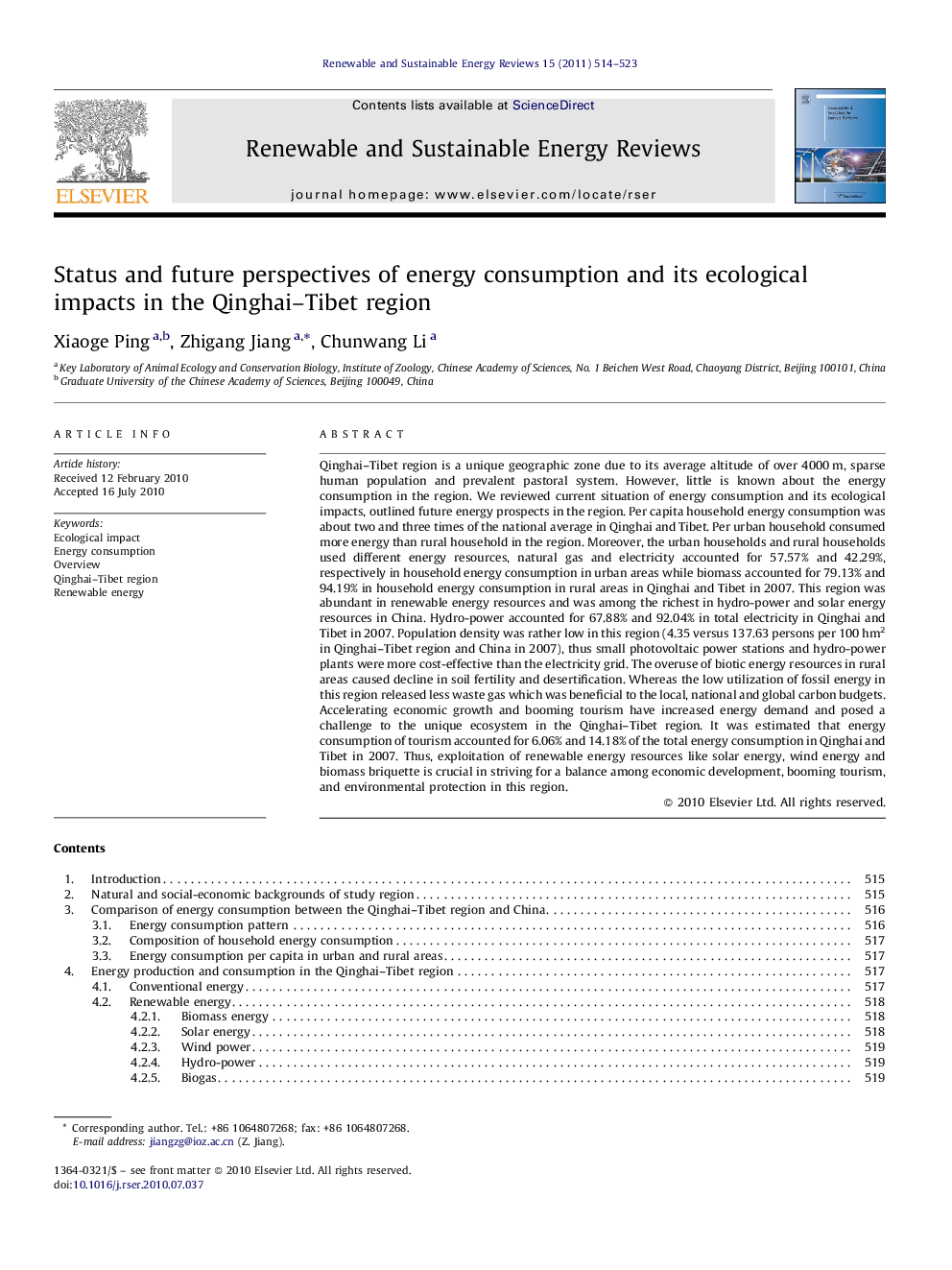| کد مقاله | کد نشریه | سال انتشار | مقاله انگلیسی | نسخه تمام متن |
|---|---|---|---|---|
| 1751554 | 1018418 | 2011 | 10 صفحه PDF | دانلود رایگان |

Qinghai–Tibet region is a unique geographic zone due to its average altitude of over 4000 m, sparse human population and prevalent pastoral system. However, little is known about the energy consumption in the region. We reviewed current situation of energy consumption and its ecological impacts, outlined future energy prospects in the region. Per capita household energy consumption was about two and three times of the national average in Qinghai and Tibet. Per urban household consumed more energy than rural household in the region. Moreover, the urban households and rural households used different energy resources, natural gas and electricity accounted for 57.57% and 42.29%, respectively in household energy consumption in urban areas while biomass accounted for 79.13% and 94.19% in household energy consumption in rural areas in Qinghai and Tibet in 2007. This region was abundant in renewable energy resources and was among the richest in hydro-power and solar energy resources in China. Hydro-power accounted for 67.88% and 92.04% in total electricity in Qinghai and Tibet in 2007. Population density was rather low in this region (4.35 versus 137.63 persons per 100 hm2 in Qinghai–Tibet region and China in 2007), thus small photovoltaic power stations and hydro-power plants were more cost-effective than the electricity grid. The overuse of biotic energy resources in rural areas caused decline in soil fertility and desertification. Whereas the low utilization of fossil energy in this region released less waste gas which was beneficial to the local, national and global carbon budgets. Accelerating economic growth and booming tourism have increased energy demand and posed a challenge to the unique ecosystem in the Qinghai–Tibet region. It was estimated that energy consumption of tourism accounted for 6.06% and 14.18% of the total energy consumption in Qinghai and Tibet in 2007. Thus, exploitation of renewable energy resources like solar energy, wind energy and biomass briquette is crucial in striving for a balance among economic development, booming tourism, and environmental protection in this region.
Journal: Renewable and Sustainable Energy Reviews - Volume 15, Issue 1, January 2011, Pages 514–523